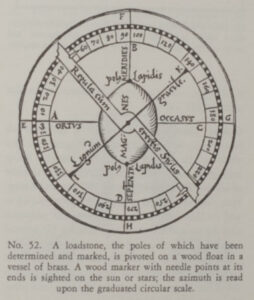Published: Norwalk, Conn. and Washington, D.C., 1980
This lavishly illustrated catalog reads like a Who’s Who of scientific greats. The Burndy Library, from which these items have been selected, is the fruit of more than fifty years of collecting by Bern Dibner. A self-made Ukrainian immigrant, Dibner made his fortune as an inventive electrical engineer. He donated about 10,000 volumes – roughly a quarter of his collection – to the Smithsonian in 1974. The remainder of the collection, which was housed at MIT from 1992-2006, now resides at the Huntington Library in San Marino, California.
 “The books described here,” the introduction begins, “were selected by Bern Dibner from a large collection of scientific and technical works … as representative of landmarks in the history of science and technology.” Among the two hundred titles featured are Copernicus’ De Revolutionibus and Kepler’s Astronomia Nova. Galileo’s Siderius Nuncius has its place, as does Newton’s Principia Mathematica.
“The books described here,” the introduction begins, “were selected by Bern Dibner from a large collection of scientific and technical works … as representative of landmarks in the history of science and technology.” Among the two hundred titles featured are Copernicus’ De Revolutionibus and Kepler’s Astronomia Nova. Galileo’s Siderius Nuncius has its place, as does Newton’s Principia Mathematica.
Most entries cite book-length works, but seminal discoveries that were announced in scientific journals are included too: Alexander Graham Bell, Heinrich Hertz, Albert Einstein, and James Clerk Maxwell are among the authors represented by important journal articles.
MIT itself is fortunate enough to own a number of the items in this catalog. At the Institute Archives and Special Collections, you’ll find copies of Peregrinus’ De Magnete (1558) and William Gilbert’s De Magnete (1600), both landmark works on magnetism. A first-edition copy of Otto von Guericke’s Experimenta Nova (1672) sits on our shelves, too, not far from Robert Boyle’s New Experiments Physico-Mechanical (1662) … we could go on, but modesty, as they say, is a virtue. (Still: ask about our Bernoulli!)


